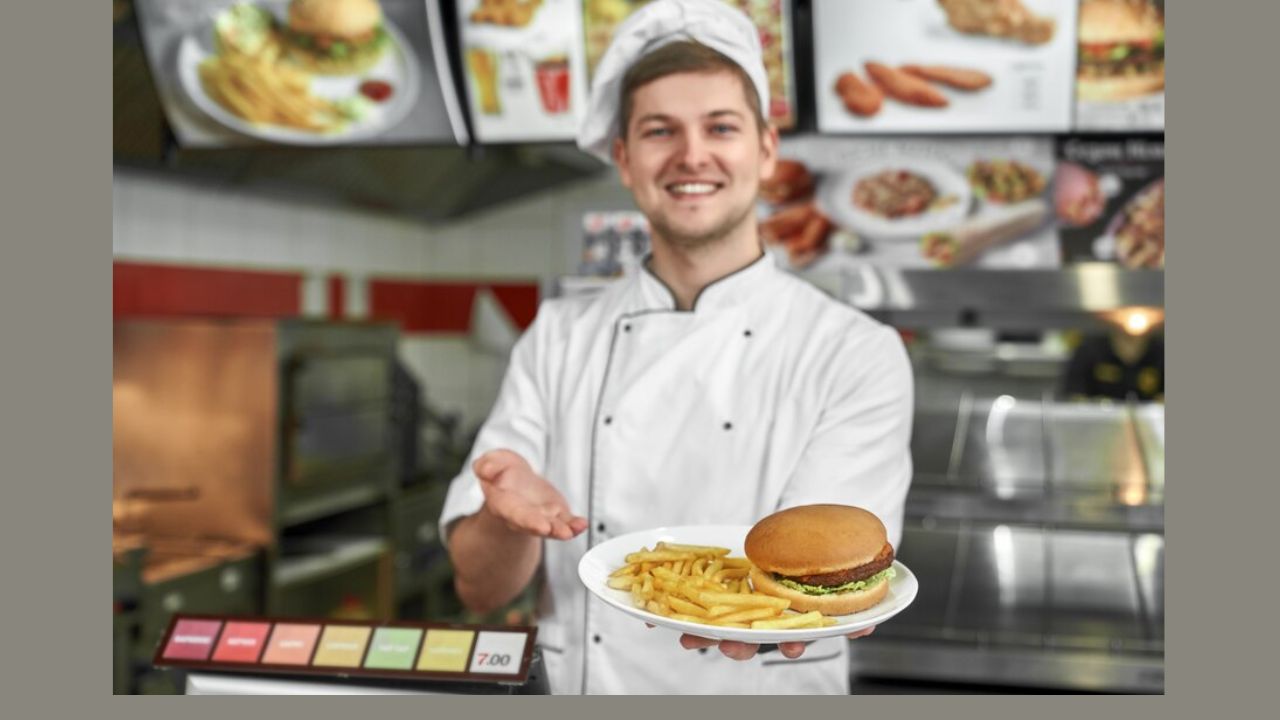physical properties and chemical properties of a pancake :Pancakes are a beloved breakfast staple, gracing ta around the world with their fluffy goodness. These delectable discs of delight have captivated taste buds for generations. But have you ever stopped to consider what makes a pancake more than just a delicious treat? The beauty of pancakes lies not only in their taste but also in the unique blend of physical and chemical properties that come together to create the perfect bite.
From the moment batter hits the hot griddle, fascinating transformations occur. Understanding these properties can elevate your pancake game from ordinary to extraordinary. Whether you’re flipping flapjacks on Sunday morning or experimenting with gourmet variations, exploring what goes into that golden brown circle will unlock tips and tricks to achieve pancake perfection.
Join us as we delve deep into both the physical and chemical properties of this iconic dish, revealing secrets that could make your pancakes fluffier, tastier, and more visually appealing than ever before!
Physical Properties of a Pancake:
Pancakes are not just delicious; they have distinct physical properties that make them visually and texturally appealing.
Their appearance often showcases a golden-brown hue, signaling that they’ve been cooked to perfection. The texture can range from fluffy to dense, depending on the batter’s ingredients and preparation method. A light fluffiness is usually desired as it brings an airy quality to each bite.
Size plays a crucial role too. Pancakes come in various diameters, typically ranging from small silver dollar pancakes to large dinner plate-sized creations. Each size offers its own unique experience.
Density contributes significantly to how pancakes feel when bitten into or chewed. A well-made pancake strikes a balance between being lightweight yet satisfying enough to hold toppings without falling apart.
Every one of these physical characteristics enhances the overall experience of enjoying this beloved breakfast staple.
A. Appearance and Texture
The appearance and texture of a pancake can evoke nostalgia or excitement. A perfectly cooked pancake boasts a golden-brown exterior that signals readiness for delicious toppings.
The surface should have a slight sheen, inviting you to dive in with your fork. Lightly bubbled areas often indicate the pancakes are fluffy inside, creating an enticing contrast between the moist crumb and the crisp outer layer.
When you cut into it, there’s a satisfying softness that springs back slightly—this is where skill comes in during preparation. The texture plays an essential role; whether it’s light and airy or dense and hearty will depend on the balance of ingredients used.
Each bite reveals layers of flavor mingling together, offering not just sustenance but comfort. The visual presentation can be enhanced with colorful fruits or drizzles of syrup, making each pancake stack appealing to both eyes and taste buds alike.
B. Size and Shape
Pancakes come in various sizes and shapes, making them a versatile breakfast favorite. The typical pancake is round, but creativity knows no bounds. You can make heart-shaped pancakes for Valentine’s Day or themed shapes for kids’ birthdays.
The size of a pancake often depends on the cooking method and the pan used. A standard pancake usually measures around 4 to 6 inches in diameter. However, some prefer larger versions that take up most of the plate, while others enjoy mini pancakes stacked high.
Thickness also plays a role in their appeal. Fluffy, thick pancakes have a delightful bite, while thinner crepe-like varieties offer different textures and flavors altogether. Each size and shape brings its own charm to the table, allowing you to customize your meal according to taste preferences or occasions.
C. Density and Weight
Density plays a key role in how pancakes turn out. A pancake’s density is influenced by the ingredients used and the method of preparation.
When you mix flour, milk, eggs, and baking powder, you’re creating a batter that will expand when cooked. This expansion alters its overall weight. Lighter batters produce airy pancakes, while denser mixtures yield thicker ones.
Weight also affects cooking time. Heavier pancakes may require a longer time on the heat to cook through properly without burning externally. Conversely, lighter options can cook quickly but might not hold up well if flipped too early.
Understanding these aspects helps achieve that perfect fluffy texture or hearty thickness depending on your preference! Experimenting with different ingredient ratios can lead to delightful surprises in both taste and consistency.
Chemical Properties of a Pancake:
Pancakes are a delightful mix of simple ingredients that undergo fascinating chemical changes during cooking. The main components like flour, eggs, milk, and baking powder play essential roles in the pancake’s transformation.
Flour contains gluten, which provides structure. When mixed with liquid and agitated, these proteins form a sticky network that gives pancakes their chewy texture. Baking powder is crucial too; it releases carbon dioxide gas when heated. This reaction creates air pockets that make pancakes fluffy.
The Maillard reaction occurs as the sugars and amino acids react under heat, resulting in browning and enhancing flavor. Each ingredient contributes to more than just taste—it impacts color and aroma too.
Understanding these reactions elevates your pancake-making skills while maximizing nutritional value through optimized ingredient choices.
A. Ingredients Used
The ingredients used in pancakes play a pivotal role in their physical and chemical properties. The base typically includes flour, eggs, milk, and a leavening agent like baking powder. Each component contributes unique characteristics.
Flour provides structure. It contains gluten that helps bind the batter together as it cooks. Eggs add richness and moisture while also acting as a binding agent.
Milk is essential for hydration but also affects texture. It can create a fluffier pancake when combined with other ingredients properly.
Baking powder introduces carbon dioxide bubbles during cooking, resulting in lightness and volume. Other additives like sugar enhance flavor and caramelization on the surface.
Variations exist too! Some opt for almond or oat flour for different textures or dietary needs. Additionally, incorporating flavors such as vanilla extract or spices adds depth to every bite without altering the fundamental chemistry of this beloved breakfast staple.
B. Reactions During Cooking
When making pancakes, a series of fascinating chemical reactions occur during cooking. Heat transforms the batter into something delightful and fluffy.
The Maillard reaction plays a crucial role here. This complex process between amino acids and sugars creates that appealing golden-brown color on the pancake’s surface. It also enhances flavor, adding depth to every bite.
Simultaneously, baking powder releases carbon dioxide when heated. This gas forms bubbles in the batter, causing it to rise and become airy. The result is a light texture that’s satisfying to eat.
Protein coagulation happens as well. As the pancake cooks, proteins in eggs and flour firm up, setting the structure we all love so much.
Each reaction contributes uniquely to creating an unforgettable breakfast experience filled with taste and warmth.
C. Nutritional Value
Pancakes are not just delicious; they also pack a nutritional punch. The basic ingredients—flour, eggs, milk, and baking powder—contribute essential nutrients.
Flour provides carbohydrates for energy. Whole grain options add fiber, which aids digestion and keeps you full longer.
Eggs offer high-quality protein along with vitamins D and B12. They play a crucial role in muscle repair and overall health.
Milk adds calcium for strong bones, while also supplying additional protein.
Toppings can enhance the nutritional profile too. Fresh fruits bring vitamins and antioxidants that support your immune system.
Consider using natural sweeteners like maple syrup or honey instead of refined sugars to keep it healthier without sacrificing flavor.
With thoughtful ingredient choices, pancakes can be both satisfying and nutritious!
The Science Behind the Perfect Pancake
Creating the perfect pancake is a blend of art and science. Understanding how ingredients interact can lead to delicious results.
Flour provides structure through gluten, while eggs add richness. Baking powder introduces air bubbles that create fluffiness. The magic happens when heat transforms this batter into golden perfection.
Temperature plays a vital role too. A hot pan ensures a crisp outside, locking moisture inside for a tender bite. Flip too early, and you risk a soggy center; wait too long, and you might burn the edges.
Experimenting with variations like buttermilk or fruit can elevate flavor profiles further. Each ingredient contributes uniquely to texture and taste.
The timing of cooking matters as well—allow pancakes to rise fully before flipping them over for optimal fluffiness. Understanding these principles will help anyone whip up stacks of mouthwatering pancakes time after time.
Tips for Achieving the Desired Physical and Chemical Properties
To achieve the desired physical properties of a pancake, start with your batter. Mix until just combined to prevent overworking the gluten. This keeps pancakes fluffy and tender.
Temperature matters too. Preheat your griddle or skillet properly; it should be hot enough that water droplets sizzle upon contact. This helps create a lovely golden-brown crust while keeping the inside soft.
For chemical properties, pay attention to leavening agents like baking powder or baking soda. They release gases when activated by moisture and heat, giving your pancakes that perfect lift.
Experiment with different ingredients for added flavor and nutrition. Whole wheat flour can enhance fiber content without sacrificing taste. A splash of vanilla extract adds depth, transforming an ordinary pancake into something special.
Don’t forget about resting time! Allowing the batter to rest before cooking enhances texture as the ingredients meld together beautifully.
Creative Ways to Enhance the Taste and Presentation of
Pancakes are a canvas for creativity. Elevating their taste and presentation can turn an ordinary breakfast into something extraordinary.
Start with flavor variations by adding vanilla extract or cinnamon to the batter. You could also experiment with different milk types, such as almond or coconut milk, for a unique twist. Incorporating fruits like blueberries, bananas, or even chocolate chips directly into your batter creates delightful surprises in every bite.
For toppings, think beyond syrup. Fresh fruit compotes offer vibrant color and natural sweetness. Whipped cream adds lightness while nuts provide a crunchy texture that contrasts beautifully with soft pancakes. A drizzle of honey or maple syrup can be artfully arranged on top for visual appeal.
Presentation matters too! Stacking pancakes high and dusting them with powdered sugar immediately catches the eye. Use colorful plates to enhance the overall look of your dish. Garnishing with mint leaves or edible flowers adds elegance that impresses guests at brunch gatherings.
Don’t shy away from themed pancake breakfasts either! For special occasions, consider heart-shaped pancakes for Valentine’s Day or spiced pumpkin pancakes in fall months to celebrate seasonal flavors.
With these creative ideas in mind, enhancing both the taste and presentation of pancakes becomes an enjoyable adventure worth exploring further.










